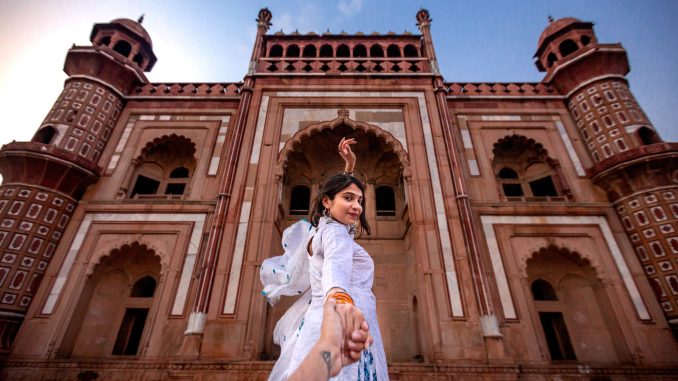
Rashtrapati Bhawan
Originally the residence of the Viceroy of India, and currently the home of India’s President, this marvel of architecture designed by architect Edwin Lutyens, is completely British by design. With over 350 rooms, it is the largest residence of its kind in the world. The exterior design of the structure is classic, but it is adorned with bits of traditional Indian design that includes well placed elephant statuary and classic Chhatri (elevated copper domes). One of the most remarkable gardens in the world, Mughal Gardens located in back of Rashtrapati Bhawan, is a dramatic balance of Mughal and British landscaping.
Bahai Temple (Lotus Temple)
Perhaps one of the most recognizable modern structures in Delhi is the Bahai Temple (Lotus Temple), because of its unique design. Built in the shape of a lotus blossom and surrounded by nine pools, the temple has received international acclaim for it structure and design. Since 1986, the Bahai Temple has welcomed all religions into the temple for worship, but the temple strictly adheres to Baha’i law.
Purana Quila
In contrast to the traditional meticulous planned and decorated Indian architecture, Puranr Quila is completely medieval in design with the occasional Chhatri. This ancient fort located on the banks of the River Yamuna, has been the site of several archaeological excavations yielding a generous collection of artefacts dating as far back as 1000 BC. The artefacts from the digs are on display at the Archaeological Museum inside the walls of the fort. Several monuments and mosques are scattered throughout or nearby the complex and are available for touring.
Chandni Chowk
Situated behind the walls of the city of Old Delhi since the 17th century, Chandni Chowk is the most popular market place in Delhi. Tourists exploring Chandni Chowk can expect to enjoy traditional Indian shops selling leather goods, clothing, electronics, books, and much more. Chandni Chowk is also home to a variety of authentic Indian food dining venues. Indians have a passion for sweets and delicacies and the market place offers over a 1,000 different kinds sweets to enjoy.
Lal Qil’ah (Red Fort)
One of the most intriguing examples of Indian architecture is the Lal Qil’ah or Red Fort, located in the walled city of Old Delhi dating back to the 17th century. In 2007, this former palace for Mughal Emperor Shah Jahan became a UNESCO World Heritage Site. Construction on the fort began in 1638 and took 10 years to complete the historic and spectacular architecture of the Red Fort. Inside the open spaces of the fort are several other structures that serve as a restaurant, a mosque, and a retail mall. Delhi is undoubtedly full of great attractions to explore, and you can get even more out of the city by using credit card benefits. To compare the types of credit cards that offer these rewards, go to the American Express India website.
